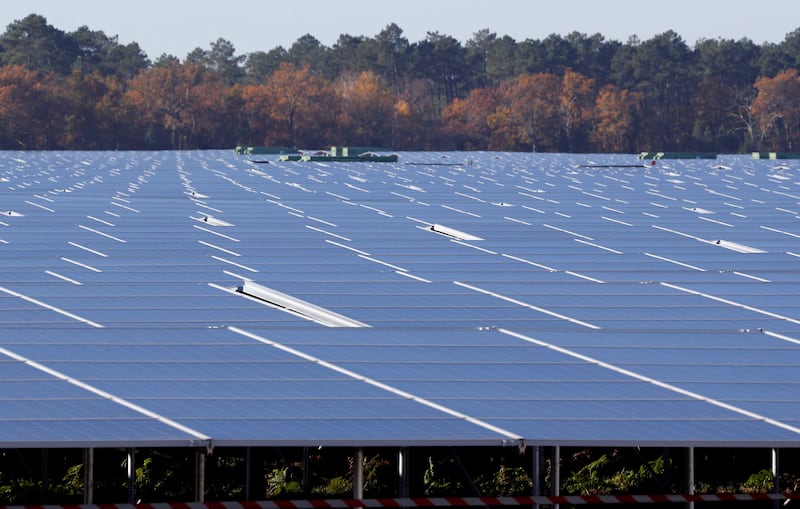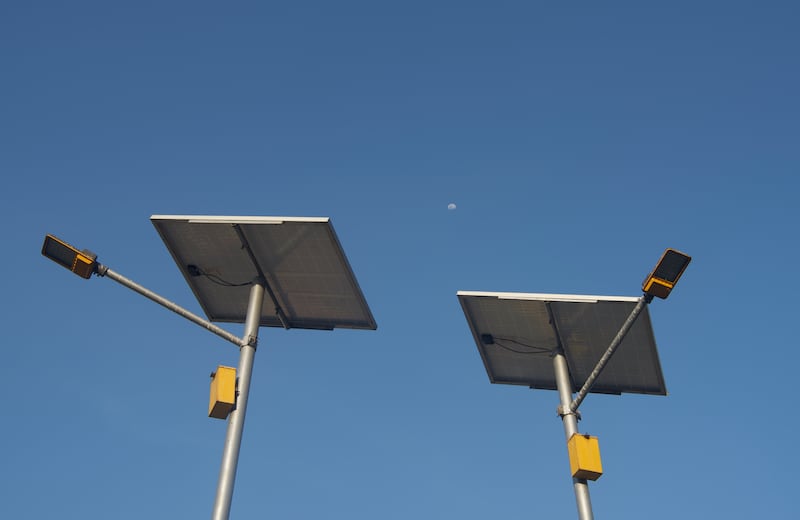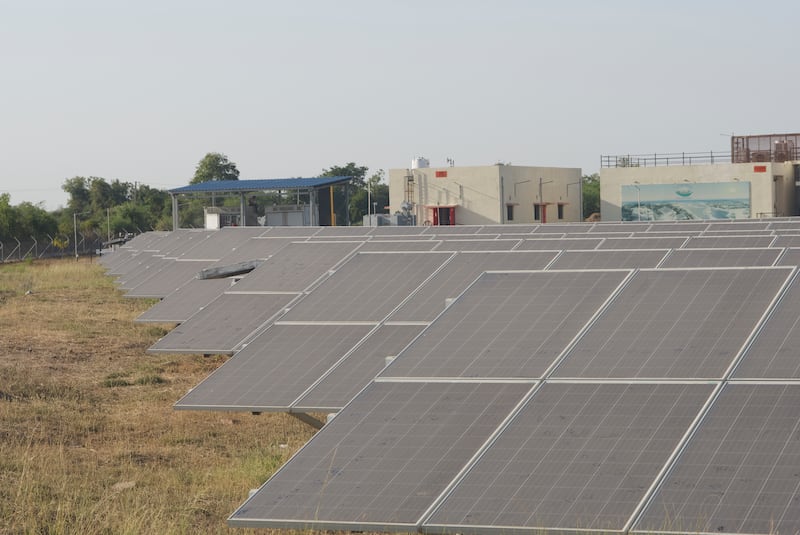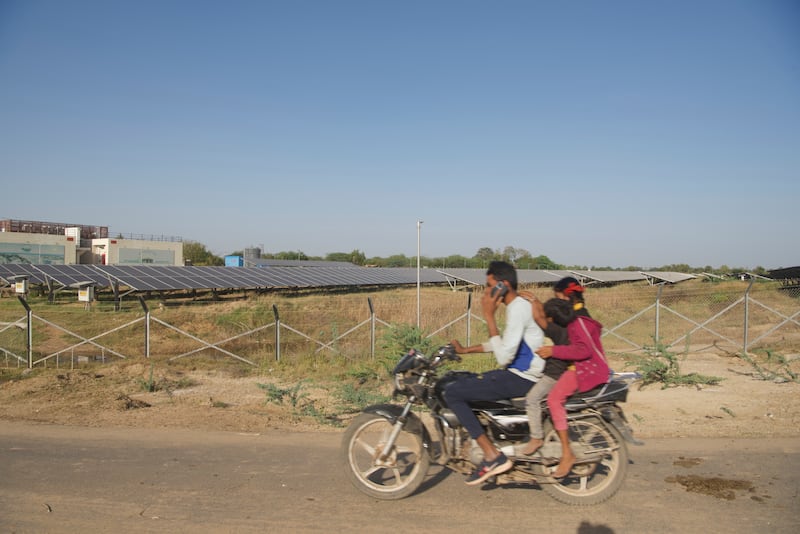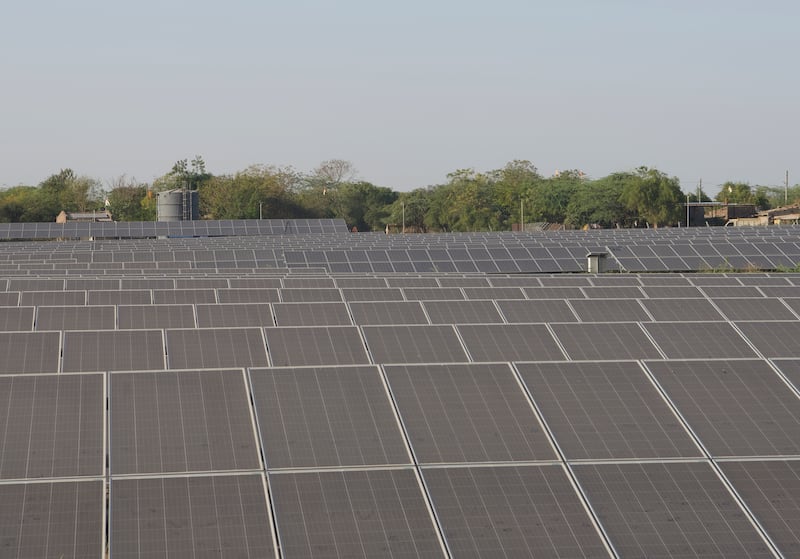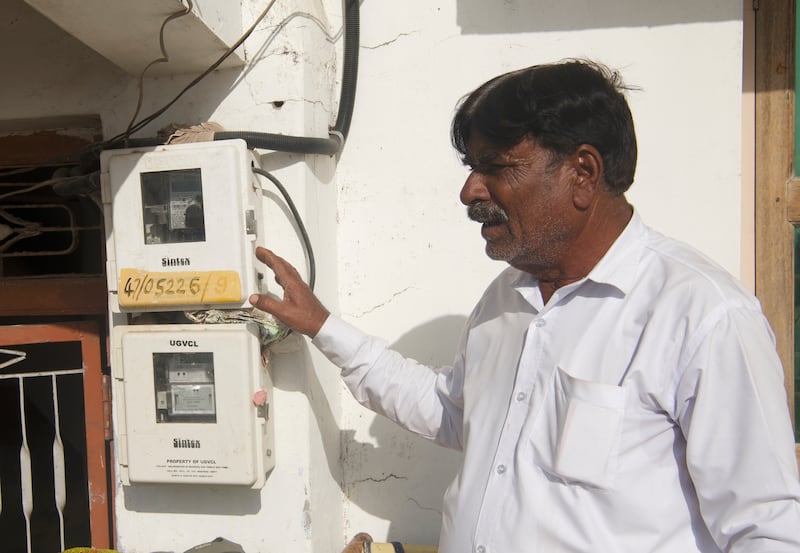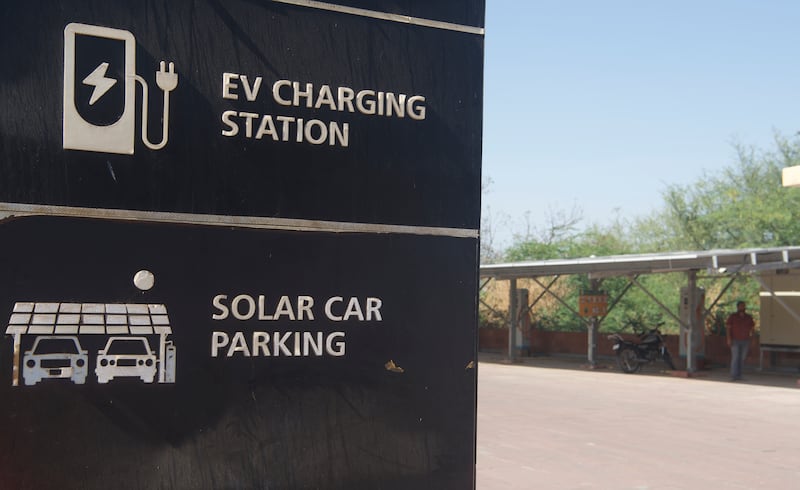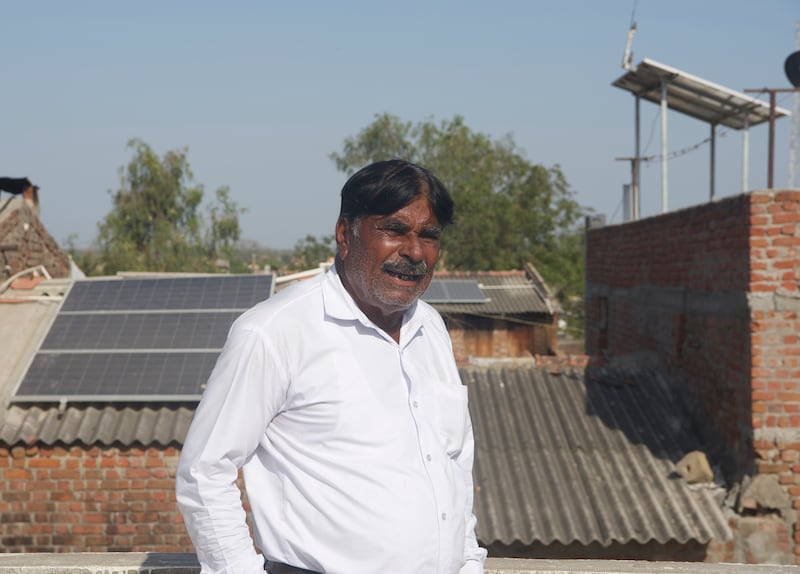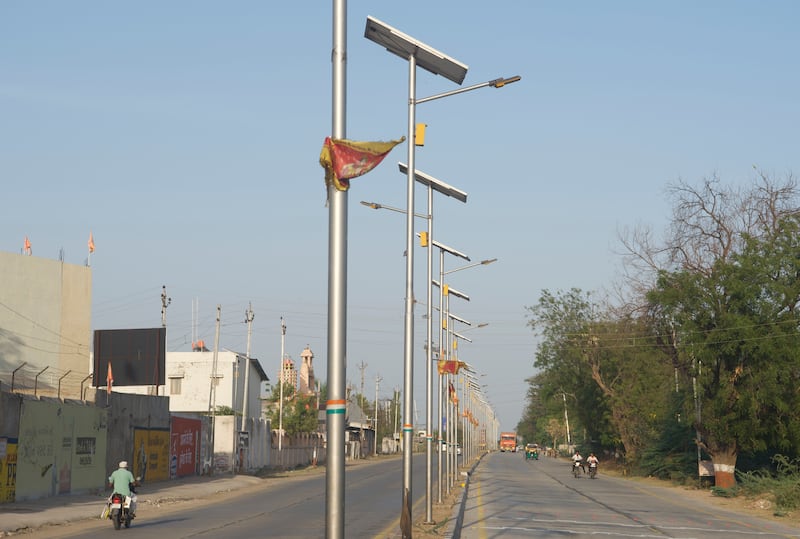Renewable energy sources are reducing electricity prices across Europe, potentially bringing down returns for producers and investors, EU energy commissioner Kadri Simson has said.
Speaking at the Irena Assembly in Abu Dhabi on Wednesday, Ms Simson said Europe needed to invest heavily in transmission and distribution grids because renewable energy requires more flexibility.
“Our regulators recorded more than 6,000 occasions where our electricity prices were zero because [of] renewables and nuclear power,” she said.
“That also sends a very confusing signal to the renewables investors. How can they expect revenues?”
Europe has made significant strides in clean energy adoption, driven by its net-zero goals as the region looks to reduce its reliance on Russian fossil fuel imports.
“Two years ago, we brought online 63 gigawatts of new renewables capacity [and] last year, we brought online 70 gigawatts,” Ms Simson said. "This year, we do expect that there will be even bigger volumes.
“The challenge is that we have to invest heavily in transmission and distribution grids because renewables do demand more flexibility."
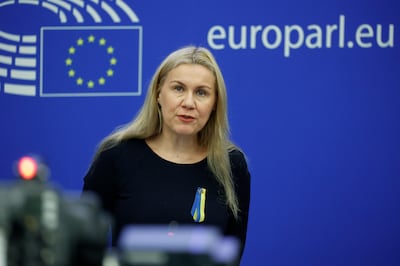
Electricity prices in the continent surged to record highs after Russia’s invasion of Ukraine in 2022, amid concerns of severe gas supply shortages.
Europe has since boosted its natural gas stockpiles and entered long-term liquefied natural gas supply agreements, which have helped bring down gas and power prices.
In February, wholesale day-ahead electricity prices in key European markets reached their lowest levels since the first half of 2021, energy think tank Ember reported.
Cities in Germany, Denmark and the Netherlands have encountered negative electricity prices during periods of high renewable energy generation, such as strong winds or sunny days, when supply exceeds demand.
The trend is not restricted to Europe.
Last May, China's Shandong province experienced a record 22 consecutive hours of negative electricity prices due to excess generation from coal and renewables.
China’s electricity demand grew by 6.4 per cent in 2023 compared with 3.7 per cent in 2022 as the easing of stringent pandemic measures drove higher power consumption in the country’s services and industrial sectors, the International Energy Agency said in a February report.
Meanwhile, demand for electricity in India increased by 7 per cent last year, lower than the growth rate of 8.6 per cent recorded in 2022, the IEA said.
“India remains the only market that did not post a substantial drop in wholesale electricity prices in 2023. Prices fell 4 per cent in 2023 … but were still almost double those in 2019,” the agency said.
The government recently invoked an emergency clause mandating companies to operate underutilised gas-based power plants by importing the fuel to meet the expected high demand for electricity during the summer months.
The country, which plans to reach a renewable energy capacity of 500 gigawatts by the end of the decade, has already hit 198 gigawatts, or about 40 per cent of its target, a senior Indian energy official told The National on the sidelines of the Irena Assembly.
India this year signed an initial agreement with the UAE to invest in renewable energy projects in the South Asian country, potentially reaching a total capacity of 60 gigawatts. The deal included green hydrogen and solar.
“Anybody is free to invest in India, but we want to step up that possibility of co-operation with the UAE on investments in the renewable energy sector,” said Bhupinder Bhalla, secretary of the Ministry of New and Renewable Energy.
He also said a large majority of India’s green hydrogen would be exported once production comes online over the next few years to markets such as the EU and Japan.
The country aims to produce 5 million tonnes of green hydrogen annually by 2030, with the potential to reach 10 million tonnes as export markets grow.
“The capacities that are coming up for the refineries will be purely domestic … but capacities that are coming up without any linkages [and are] still open can be supplied abroad or to the energy industry,” Mr Bhalla said.
